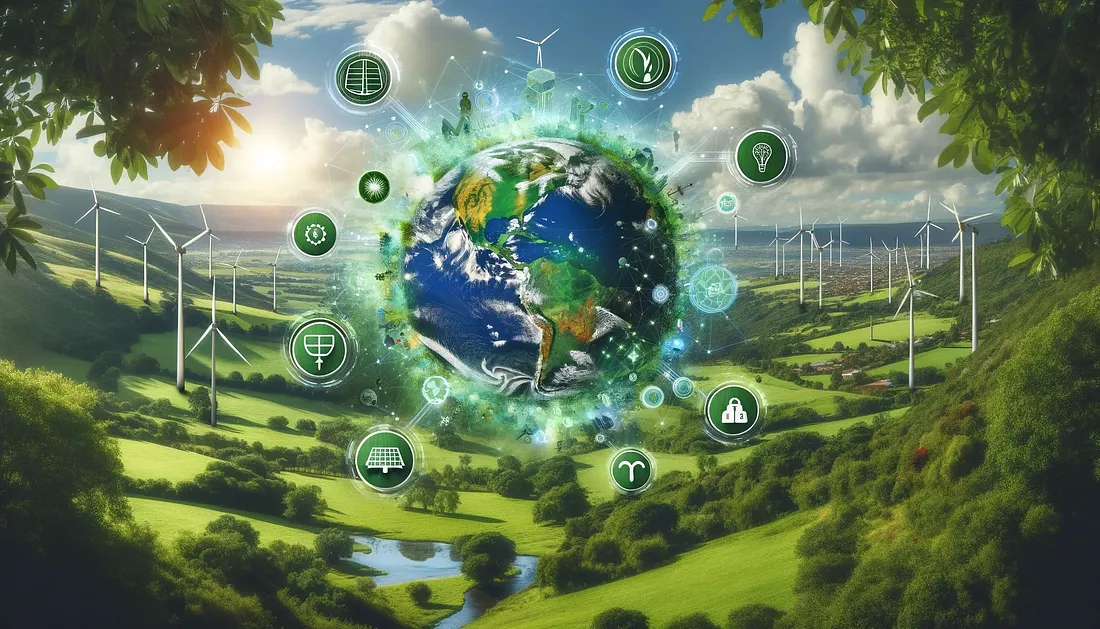Introduction
In today’s environmentally conscious world, the demand for green products is steadily rising as consumers increasingly prioritize sustainability in their purchasing decisions. This shift is driven by a growing awareness of the environmental crises facing our planet, including climate change, resource depletion, and pollution. Green products, characterized by their minimal environmental impact throughout their lifecycle, offer a viable solution to mitigate these issues and reduce ecological footprints. These products are designed with sustainability in mind, using renewable resources, energy-efficient processes, and materials that are either recyclable or biodegradable. As a result, they play a crucial role in conserving natural resources, reducing greenhouse gas emissions, and minimizing waste.

The significance of green products extends beyond environmental benefits. They also contribute to improved public health by reducing exposure to harmful chemicals and pollutants commonly found in conventional products. This makes them safer for consumers and the environment alike. Furthermore, the adoption of green products supports the burgeoning green economy, driving innovation and creating jobs in sustainable industries. As more companies invest in eco-friendly technologies and practices, the market for green products continues to expand, offering consumers a wider array of choices. This blog explores the various benefits of green products, delves into popular categories such as energy-efficient appliances, renewable energy systems, and organic goods, and highlights their essential role in fostering a sustainable future. Through this exploration, it becomes clear that embracing green products is not just a trend but a necessary step toward a healthier planet and a more sustainable way of life.
What are Green Products?
Green products, also known as eco-friendly or sustainable products, are items manufactured using processes that minimize harm to the environment. These products aim to conserve resources, reduce pollution, and support ecological balance. They are designed with the principles of sustainability in mind, considering factors such as:
- Renewable Materials: Utilizing materials that can be replenished naturally, such as bamboo, recycled metals, or organic cotton.
- Energy Efficiency: Incorporating production methods that minimize energy consumption and carbon emissions.
- Recyclability: Ensuring that products can be recycled at the end of their lifecycle, reducing waste and promoting a circular economy.
- Biodegradability: Designing products to break down naturally into non-toxic substances when disposed of, minimizing environmental impact.
The adoption of these principles ensures that green products minimize their ecological footprint throughout their entire lifecycle. From sourcing raw materials sustainably to reducing energy use during manufacturing and providing environmentally friendly disposal options, each aspect is carefully considered to mitigate environmental harm.
Green products play a crucial role in promoting sustainable consumption and production practices. By choosing eco-friendly alternatives, consumers contribute to global efforts to combat climate change, conserve natural resources, and protect biodiversity. Moreover, these products often provide additional benefits such as improved indoor air quality, reduced exposure to harmful chemicals, and long-term cost savings through energy efficiency. As awareness grows and technology advances, the market for green products continues to expand, offering consumers a wider array of choices to support their commitment to sustainability and environmental stewardship.

Benefits of Green Products
Environmental Impact Reduction
- Resource Conservation: Green products often use renewable resources and minimize energy consumption during production.
- Pollution Reduction: They generate fewer pollutants such as greenhouse gases and toxic chemicals, contributing to cleaner air and water.
- Waste Reduction: Many green products are designed for reuse, recycling, or biodegradability, reducing waste in landfills and oceans.
Health and Well-being
- Reduced Exposure to Toxins: Green products typically contain fewer harmful chemicals, making them safer for consumers and the environment.
- Improved Indoor Air Quality: Eco-friendly materials in products like paints and furnishings contribute to healthier indoor environments.
Economic Benefits
- Long-term Cost Savings: Energy-efficient appliances and vehicles reduce utility bills and fuel costs over time.
- Market Growth: The green products sector is expanding, creating job opportunities and driving innovation in sustainable technologies.
Popular Categories of Green Products
Energy-Efficient Appliances
- Appliances: Energy Star-rated refrigerators, washing machines, and dishwashers consume less energy and water.
- Lighting: LED bulbs are energy-efficient alternatives to traditional incandescent bulbs.
Renewable Energy Systems
- Solar Panels: Generate electricity using sunlight, reducing dependence on fossil fuels.
- Wind Turbines: Harness wind energy to generate electricity, a clean and renewable energy source.
Eco-Friendly Building Materials
- Recycled Materials: Products made from recycled wood, glass, or plastic reduce resource extraction and waste.
- Sustainable Flooring: Bamboo and cork flooring are renewable alternatives to hardwood.
Organic and Natural Products
- Food and Beverages: Organic produce and beverages grown without synthetic pesticides or fertilizers.
- Personal Care: Cosmetics and skincare products made from natural ingredients, free from harsh chemicals.
Challenges in Adopting Green Products
Higher Initial Costs
- Price Premium: Green products may have higher upfront costs due to sustainable manufacturing practices and materials.
Consumer Awareness and Education
- Information Accessibility: Consumers may lack awareness or accurate information about green product benefits and availability.
Market Fragmentation
- Product Availability: Availability and accessibility of green products may vary by region, limiting consumer choices.
The Role of Green Products in Sustainable Living
Green products play a crucial role in promoting sustainable living practices and reducing the environmental impact of human activities. By choosing eco-friendly alternatives, consumers contribute to global efforts to combat climate change, conserve natural resources, and protect biodiversity. Manufacturers and businesses are increasingly investing in sustainable practices and innovations to meet growing consumer demand for green products.
Conclusion
Embracing green products represents more than just a passing trend; it signifies a deliberate step towards building a sustainable future. By choosing eco-friendly alternatives, individuals can actively contribute to mitigating environmental impacts, fostering personal well-being, and bolstering a flourishing green economy. As global awareness of environmental issues grows and technology evolves, the adoption of green products is set to catalyze further innovation, driving transformative changes that will shape a sustainable world for future generations.
Opting for green products aligns consumer choices with broader environmental goals, promoting resource conservation, reducing carbon footprints, and minimizing pollution. Beyond environmental benefits, these products often enhance personal health by reducing exposure to harmful chemicals and pollutants found in conventional alternatives. Moreover, supporting green products encourages businesses to prioritize sustainable practices, spurring economic growth in sectors dedicated to renewable energy, sustainable agriculture, and eco-friendly manufacturing.
As we look ahead, advancements in green technology and increased consumer demand will continue to drive the development of innovative solutions. From energy-efficient appliances to biodegradable packaging and renewable energy systems, the evolution of green products will play a pivotal role in creating a more resilient and sustainable global economy. By embracing green products today, individuals contribute to a collective effort towards building a greener, healthier planet for future generations to enjoy and thrive in.
More on:
- https://www.micro2media.com/the-growing-demand-for-green-jobs-career-opportunities-in-sustainability/
- https://www.micro2media.com/benefits-of-different-types-of-exercise/
- https://puregoodsmarket.com/blogs/personal-care/embracing-eco-friendly-products-a-pathway-to-sustainable-living
- https://mustaqim.com.ph/embracing-an-eco-friendly-lifestyle-a-pathway-to-sustainable-living/
